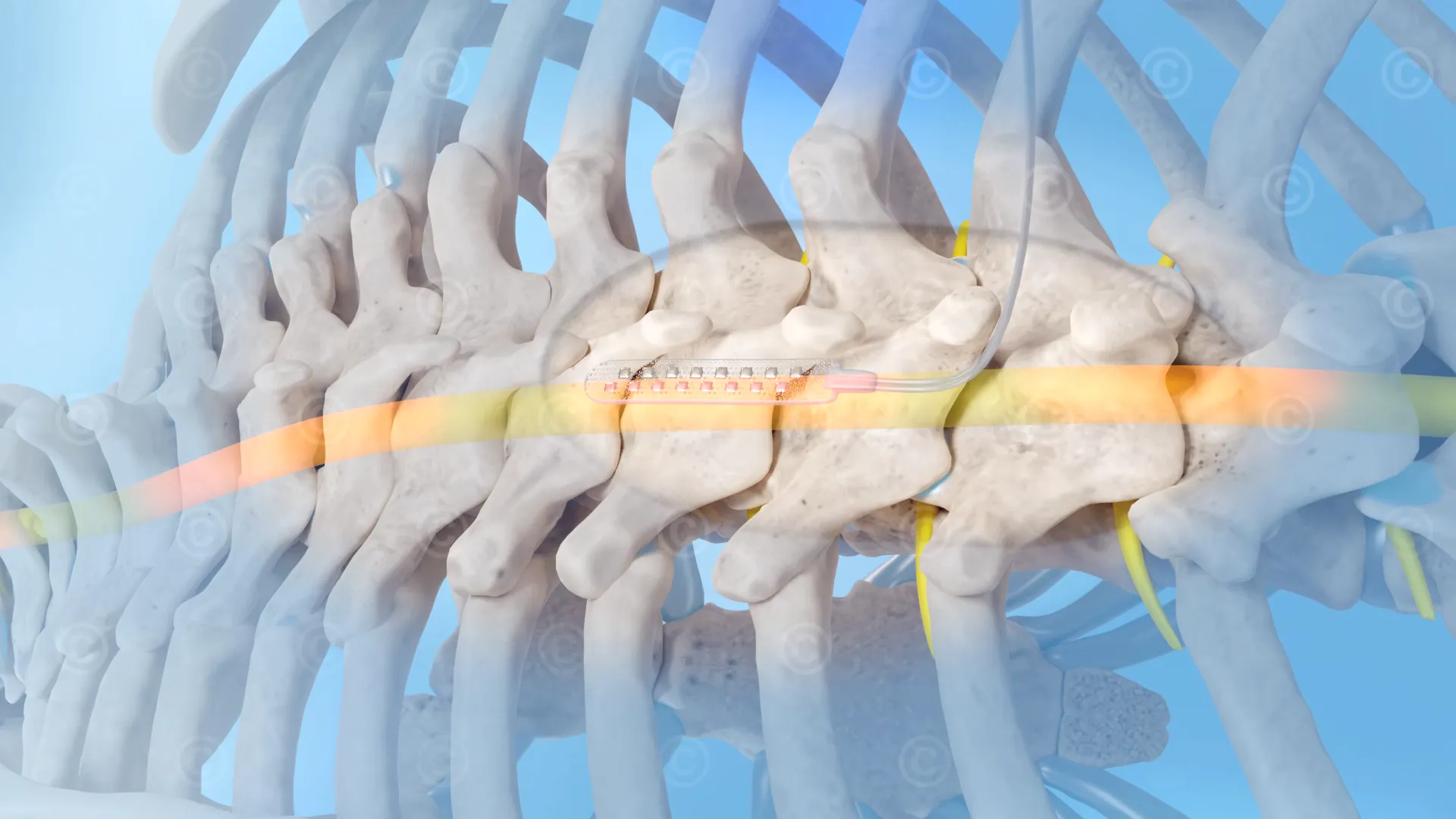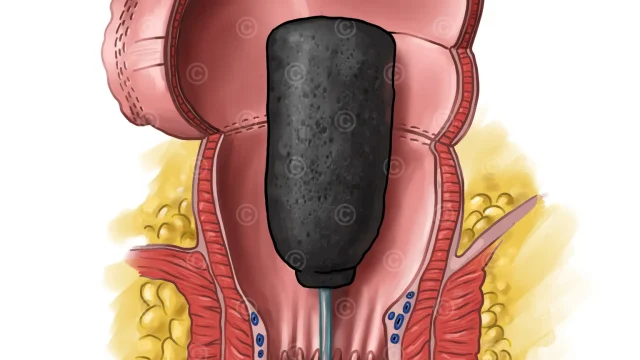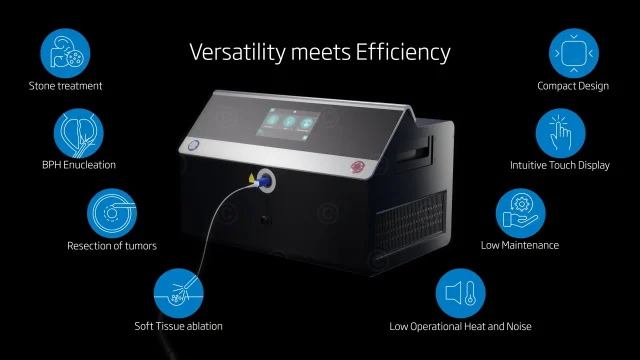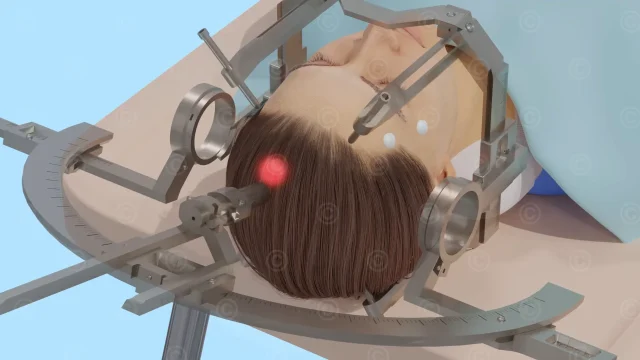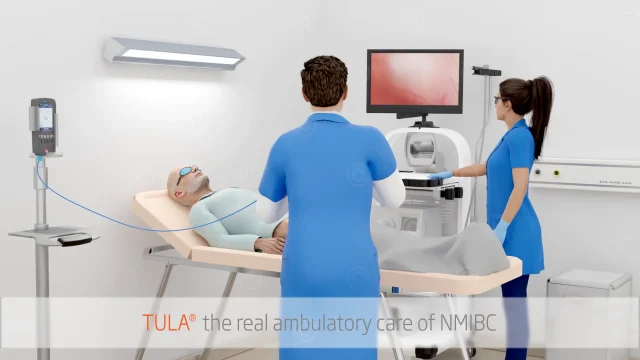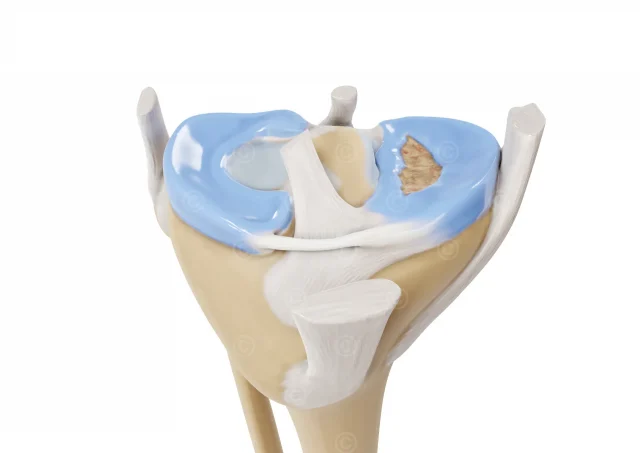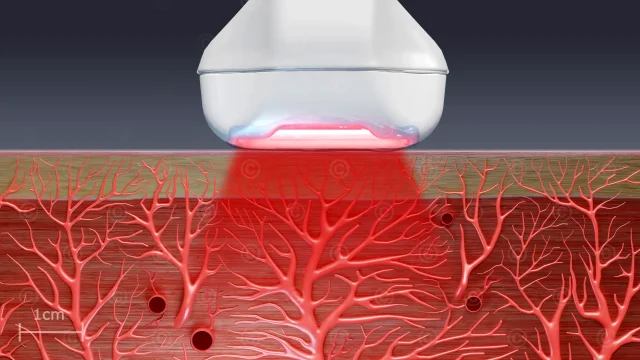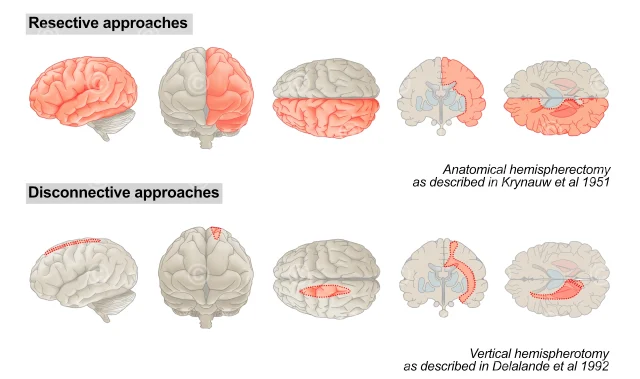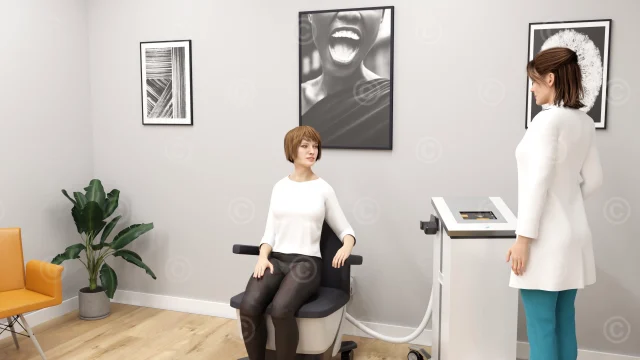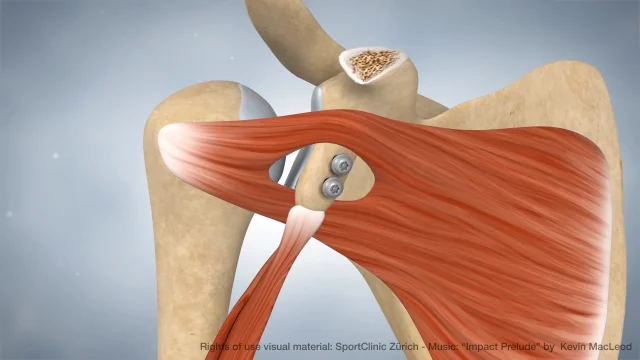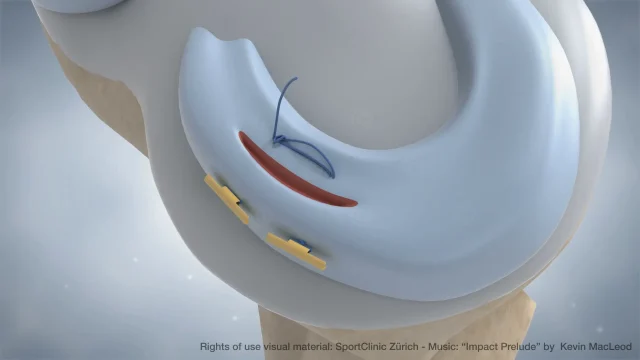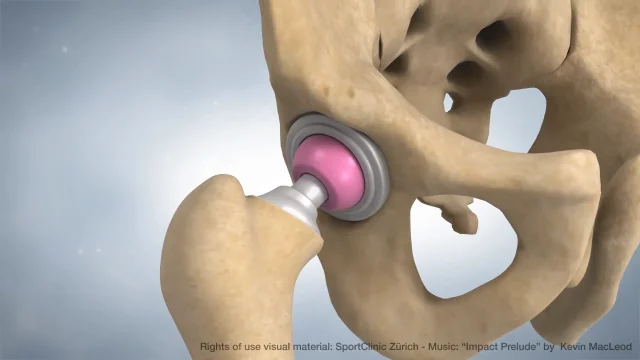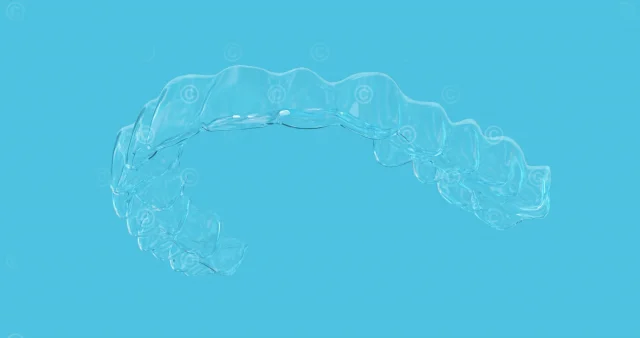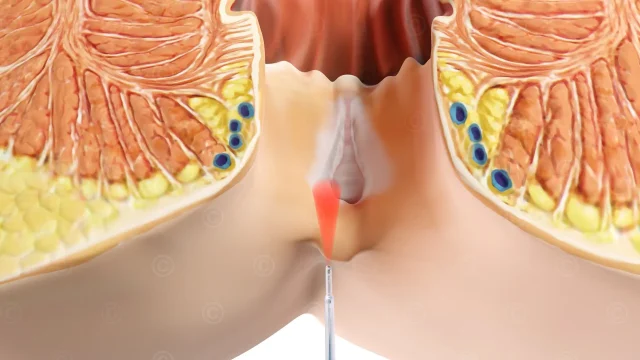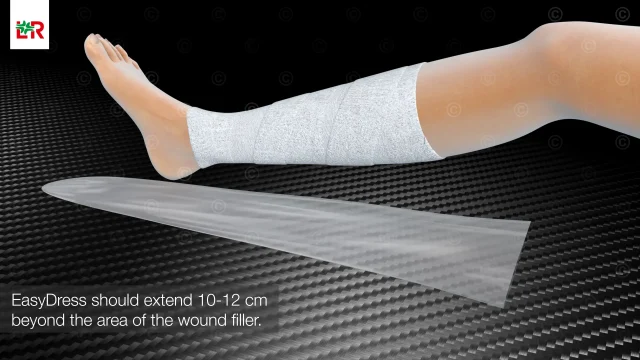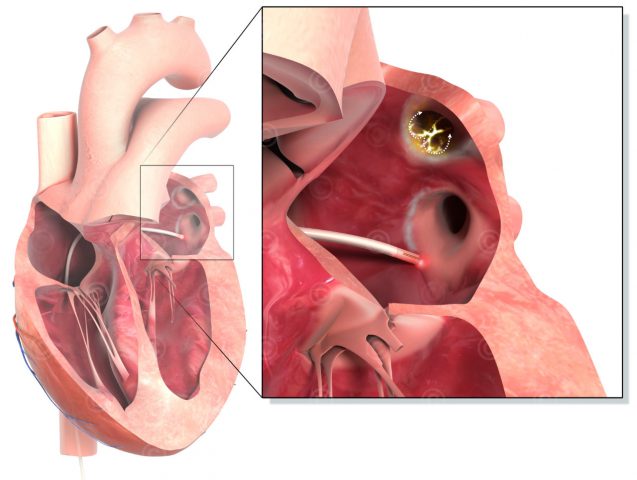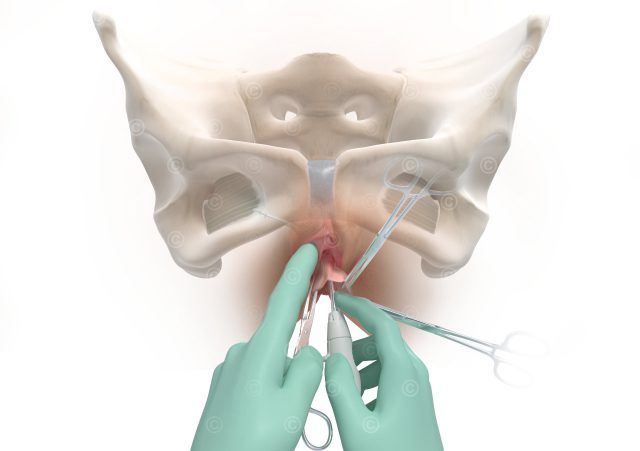Background
Spinal cord stimulation is a medical therapy for the treatment of chronic pain in the legs or back. This alternative procedure is used when other treatment options (conservative, surgical) were unsuccessful or have not effectively reduced the pain. In spinal cord stimulation, an implanted stimulator sends electrical impulses to the spinal cord to superimpose pain signals and reduce the perception of pain.
Rights of use of the image material: Inselspital Bern
Music: Kevin McLeod – Impact prelude – Usage license: Creative Commons (CC BY 3.0)
Project description
For an information film for the Inselspital Bern, we created 3D animated sequences on the surgical procedures required for spinal cord stimulation. The sequences were integrated into a larger information film made from real footage and serve to inform the patient about the details of an upcoming surgery.

In the first part, an electrode is inserted using a needle and positioned in the epidural space on the spinal cord. The correct positioning of the electrode is important to ensure an optimal pain reduction effect.

Depending on the findings, a plate electrode is implanted as an alternative, which is larger and wider and enables wider pain coverage. It consists of a flexible, flat plastic or silicone disk with several embedded electrodes. For implantation, a small part of the vertebral arch must be removed in a minor surgical procedure.
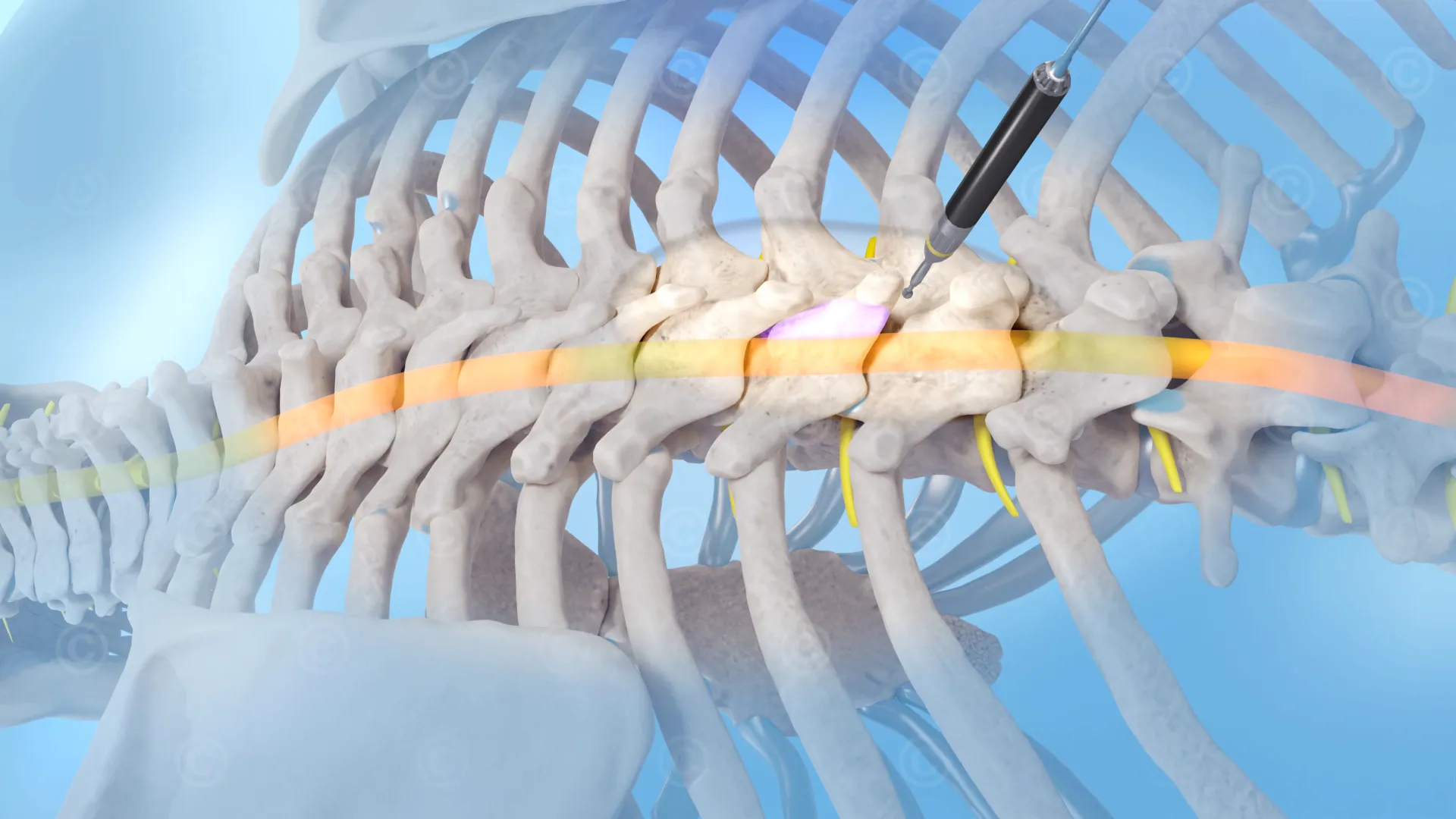
With both of the above methods, a small stimulator (pulse generator) is implanted under the skin (subcutaneously) after a successful test phase. This is connected to the electrodes and supplies them permanently with electrical signals.
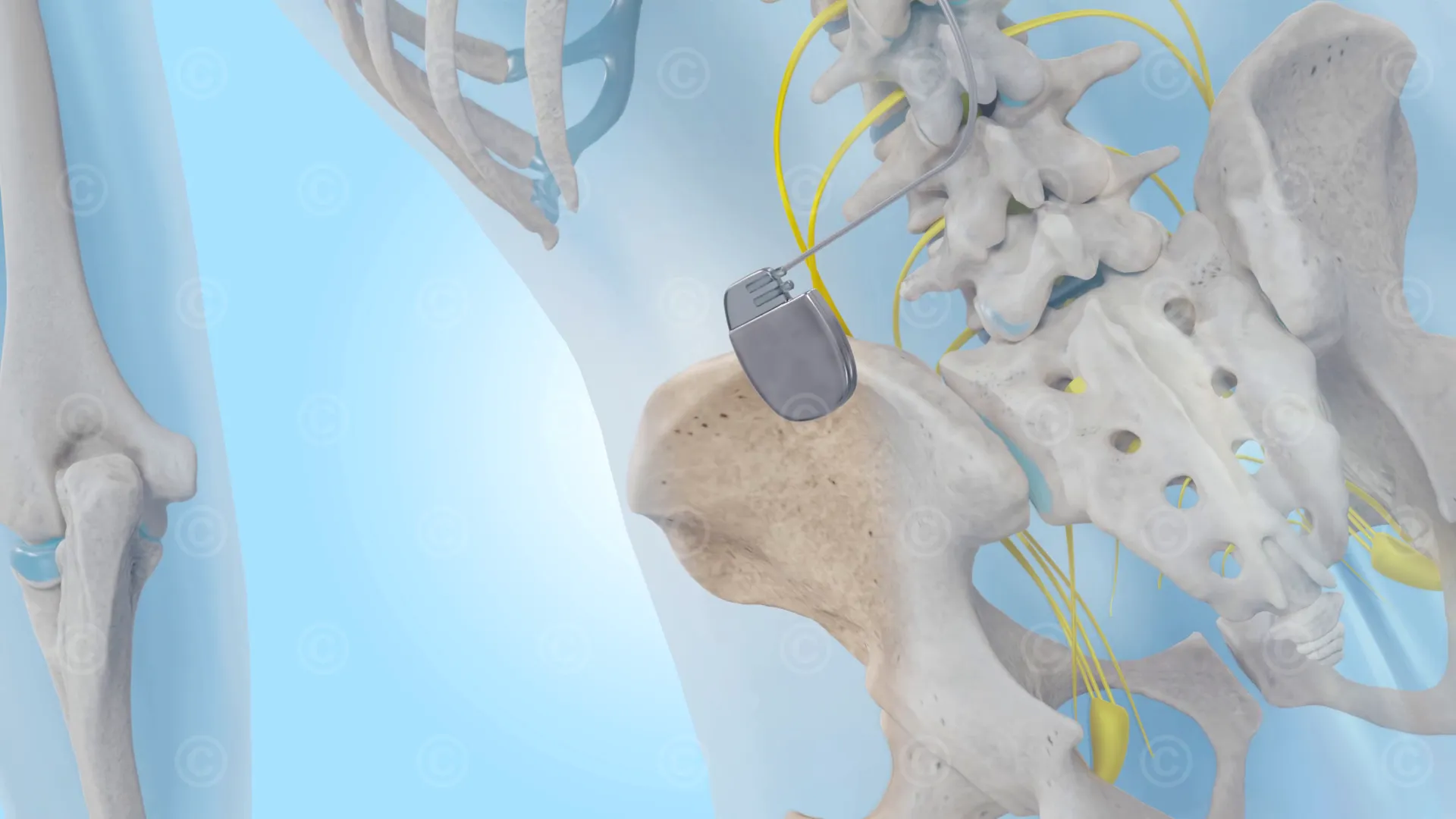
Project details animation spinal cord stimulator
Content: 3D animated sequences
Use: Information film for patient for use on website or doctor’s consultation
Specs: Full-HD, ~1:30 min
Client: Inselspital Bern, University Clinic for Neurosurgery, Dr. Andreas Nowacki
The rights of use of the images shown here are held by the client; use is not permitted. Images and video are protected by watermarks.
Screenshots animation spinal cord stimulator


